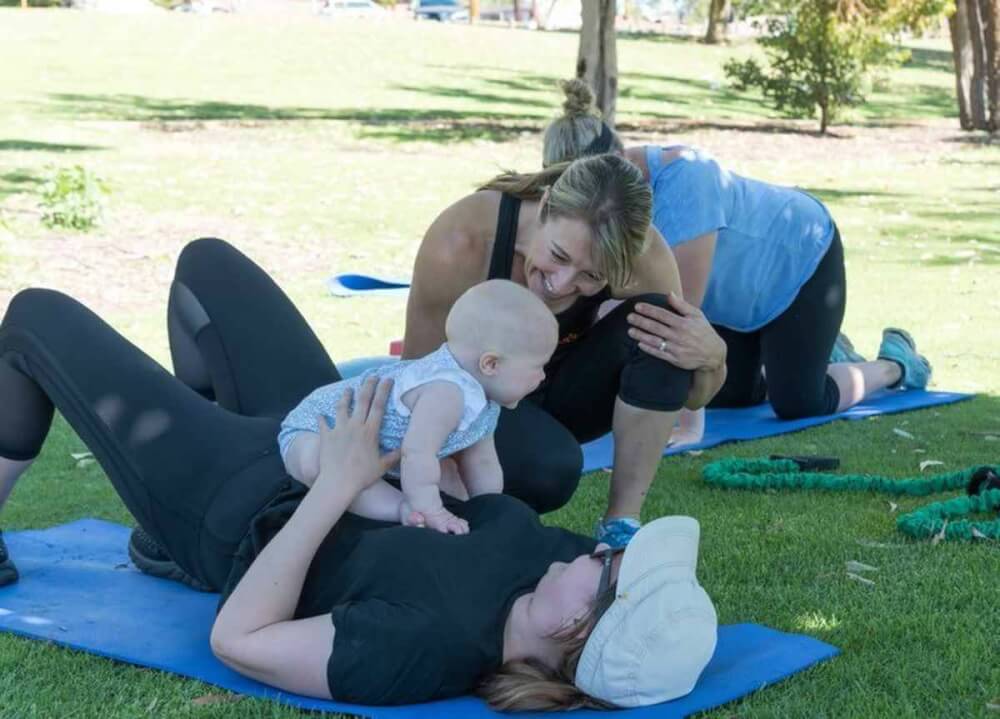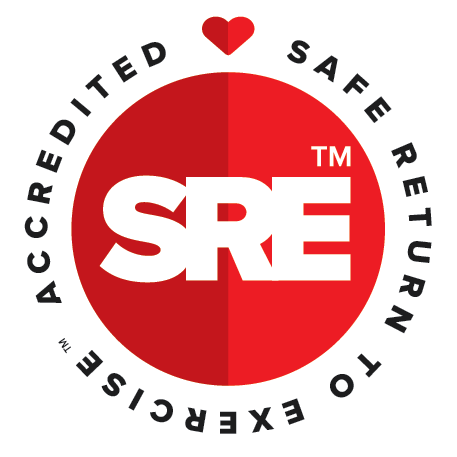How can I return to exercise with a prolapse?

Though often not discussed, pelvic organ prolapse is common in women, especially those who have had children.
A prolapse occurs when the supporting tissues of the pelvic organs may be torn or stretched, and the pelvic floor becomes weak. It is a condition in which structures such as the uterus, rectum, bladder, urethra, small bowel, or the vagina itself, may begin to fall out of their normal positions.
Many new mums might be wondering if it is possible to exercise with a prolapse?
Yes, exercising IS still possible when you have a prolapse. I work with many women every week who have a prolapse.
But, there are a few things you should consider before returning to exercise. If you have or think you might have a prolapse and you want to return to exercising, here are five recommendations to ensure that your return to exercise is safe, effective and sustainable:
1. Consult with A Women’s Health Physiotherapist
For most women I work with who have a prolapse, the first person they consulted was a Women’s Health Physiotherapist. Their consultation was prompted by a feeling of heaviness in the pelvis (worse at night) or a feeling of their insides coming out.
In this situation, it is crucial that you consult with a Women’s Health Physiotherapist to understand the nature and severity of the prolapse, as well as your overall pelvic floor and bladder health. Often a prolapse is not a condition that occurs in isolation.
These health professionals are our eyes on the inside and should be a part of every new mum’s support team.
Click here to find a Women’s Health Physiotherapist near you.
2. Learn To Breathe
Many women are not breathing effectively or are breathing so shallowly that they are impacting their recovery in the postnatal period or when it comes to pelvic floor issues.
When returning to exercise you should first understand how your core system works and the role of various muscles and other structures that provide you with both lower back and pelvis stability. These contribute to keeping your recovering body safe and managing your prolapse during exercise.
It is so important to learn to effectively and efficiently breathe to support your body in the postnatal repair stage, as well as in everyday function to keep you safe and strong.
3. Understand Your Cycle
For women who have a prolapse, the impact of changing hormone levels over the course of the month can be frustrating, uncomfortable and, if not understood, can really impact on their mental wellbeing.
It is important to understand your menstrual cycle to understand when your individual symptoms are worse or increased and when you are feeling your strongest and most confident in your body during the month. The two times of the month that symptoms are generally worse are around ovulation and just before and during the monthly bleed.
However, our cycles are individual to us. Therefore, taking the time to track your cycle will empower you by knowing when you should pull back and when you can increase your intensity and load.
4. Consider Lifestyle Factors
Lifestyle factors such as sleep, stress management and nutrition can all have an impact on your prolapse management, and, in turn, your exercise.
As a mum, sleep can often be an elusive luxury. A lack of sleep, or worse, chronic sleep deprivation, can impact on your prolapse symptoms and therefore on your ability to exercise.
We may not always be able to control the amount of sleep or rest we are getting. However, identifying ways to manage stress and looking after your mental wellbeing is crucial for managing a prolapse and being able to consistently exercise and move your body.
Finally, nutrition is an area of every mum’s lifestyle that should be a priority, However, for many mums, their nutrition, like exercise, is down the bottom of the priority list. The importance of a diet full of wholefoods, especially fruits and vegetables, high-quality protein sources and good fats cannot be underestimated. Not only does it support recovery from pregnancy and birth and your mental wellbeing, to name a few areas, but also the management of conditions like prolapse, including good bladder and bowel health.
5. Work with A Women’s Fitness Specialist or MumSafe™️ Trainer
These professionals understand the female body, the demands on the body from pregnancy and the postpartum body.
A mum-focussed fitness trainer can help ensure a woman – no matter what birth injury or condition they are managing (including prolapse) – can exercise and look after themselves so they can become the fittest, strongest and most confident version of themselves.
Having a prolapse does not mean you have to give up the idea of ever exercising again. But it does mean a few important steps need to be taken on your own individual journey to ensure that your return to exercise is safe, effective and sustainable.
Jody runs Body Empowerment with Jody in Perth, WA. To find out more about her and get in touch, click here.
MumSafe™ is the go-to place online for women to find mum-focused fitness services that are all accredited, experienced and partnered with women’s health physios so you know you are in very safe hands. Click here to find a trainer near you.
Jody Pearce runs Body Empowerment with Jody in Western Australia, . Learn more about Jody and Book your Trial today.
